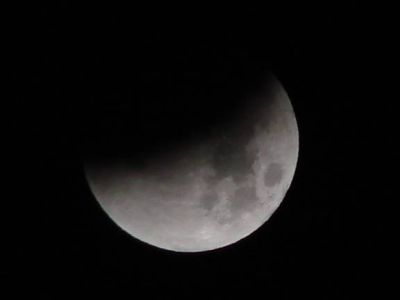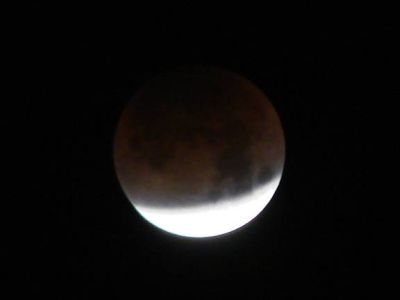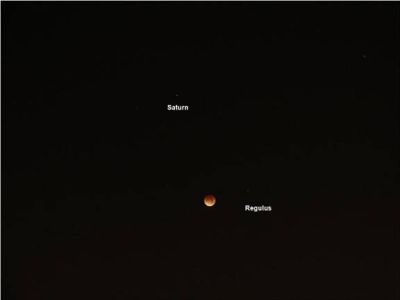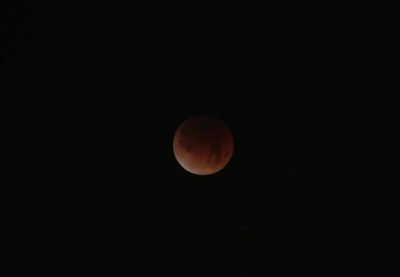22 February 2008

Lunar Eclipse Montage
Photos and processing by Aymen Ibrahem, Senior Astronomy Specialist
On the morning of 21 February 2008, a total lunar eclipse was visible in Egypt. The Moon plunged into Earth’s umbra at 03:43 EET (01:43 GMT). The Moon took 3 hours and 26 minutes to traverse our planet’s immense shadow. BA Senior Astronomy Specialist, Aymen Ibrahem, observed the eclipse from Cairo, Egypt.
The eclipse was visible from Africa, Europe, Western Asia, South America and most of North America. Total lunar eclipses are among the most beautiful natural phenomena. During totality, the Moon glows in various hues of yellow, orange and red. The visibility may also render the Moon tints of brown or grey. Unlike solar eclipses, lunar eclipses can be viewed safely with the unaided eye.
Caution: In normal conditions, or during solar eclipses, never observe the Sun directly with your unprotected eyes, or through any optical aid. The Sun can be observed only with special scientific devices. Observe the Sun only under the supervision of an astronomy specialist.
“During the eclipse, the Moon shone in fascinating colors, including yellow, orange, red, white and grey,” said Ibrahem. “The wonderful sight gave me the impression that I was observing a moon of a distant extraterrestrial planet.”
The Moon set during the eclipse in Egypt. Ibrahem took over 600 images of the eclipse. Some of his images are presented in the picture gallery below.
Picture Gallery

Fig (1)
Partial Eclipse
21 February, 2008 03:53 EET
Photo by Aymen Ibrahem, BA Senior Astronomy Specialist

Fig (2)
21 February 2008, 04:09 EET
Photo by Aymen Ibrahem, BA Senior Astronomy Specialist

Fig (3)
21 February, 2008 04:23 EET
Photo by Aymen Ibrahem, BA Senior Astronomy Specialist

Fig (4)
The Moon showed a grayish hue, near totality.
21 February, 2008 04:38 EET
Photo by Aymen Ibrahem, BA Senior Astronomy Specialist

Fig (5)
Eclipse Planet
During the eclipse, Saturn, the ringed planet, and the bright star Regulus, the brightest star in the zodiacal constellation Leo, shone near the Moon in the sky. The Moon is approximately 400,000 km from Earth, but Saturn was approximately 1.24 billion km away. By the stellar distance scale, Regulus is one of the nearest stars. It is approximately 80 light years distant. (One light year is equal to approximately 10,000 billion km.)

Fig (6)
Totality
The Moon does not disappear during totality. It glows in a faint red light. Due to refraction of sunlight by Earth’s atmosphere, sunlight is reddened, and directed to the lunar surface, where it is reflected back.
Photo by Aymen Ibrahem, BA Senior Astronomy Specialist

Fig (7)
Earth’s shadow is approximately 1.4 million km long. It is approximately 10,000 km across at the distance of the lunar orbit.
21 February, 2008 04:19 EET
Photo by Aymen Ibrahem, BA Senior Astronomy Specialist
Further Reading
NASA Eclipse Homepage
http://sunearth.gsfc.nasa.gov/eclipse/eclipse.html
Aymen Mohamed Ibrahem
BA Senior Astronomy Specialist